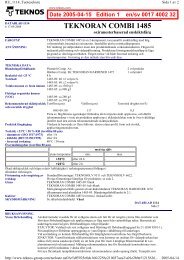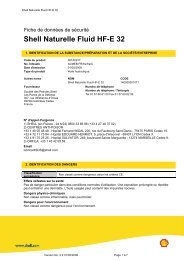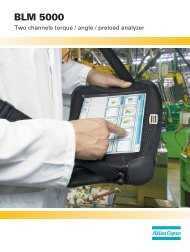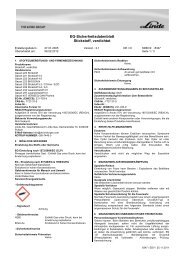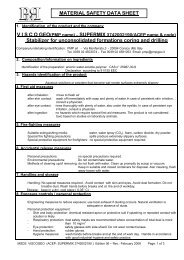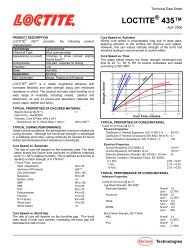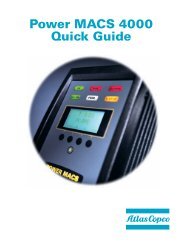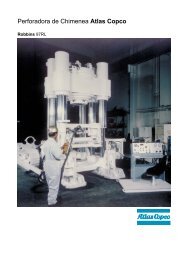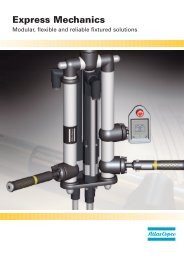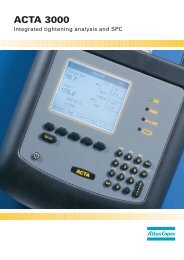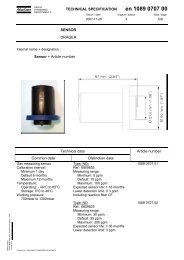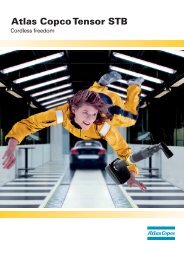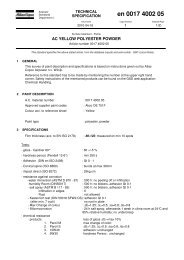Ergonomics - Atlas Copco
Ergonomics - Atlas Copco
Ergonomics - Atlas Copco
Create successful ePaper yourself
Turn your PDF publications into a flip-book with our unique Google optimized e-Paper software.
54<br />
the working environment<br />
A typical automotive plant in the 1970’s was<br />
a noisy place. Conveyors, hydraulic pumps<br />
and other sources generated a general noise<br />
level of around 85 dB(A). The reverberating<br />
field of the workplace was not treated acous-<br />
tically. Fortunately for the physical well-<br />
being of the personnel, hand power tools and<br />
other installations have improved continu-<br />
ously over the years. Today, the general<br />
noise level is usually about 80 dB(A). The<br />
hand tools are not used for long periods each<br />
day and thus do not add much to that level.<br />
Another noise source (or sound source de-<br />
pending on the listener) which has become<br />
commonplace is music from radios, and this<br />
can be annoyingly high.<br />
Nowadays, assembly line production is<br />
quite complicated, as are the products. In-<br />
creased demands on quality are motivating<br />
investments in more sophisticated equip-<br />
ment. As the new installations are also bet-<br />
ter from an ergonomic viewpoint, this trend<br />
is resulting in a gradual improvement of the<br />
working environment.<br />
Design for good ergonomics<br />
The most important parameter for angle<br />
nutrunners is the shock reaction in the<br />
trigger handle at the end of the tightening<br />
process. Attempts to eliminate this problem by<br />
design have taken two different paths – one<br />
for pneumatic tools and one for electric tools.<br />
The level of shock reaction depends on the<br />
forces acting on the machine during the tight-<br />
ening cycle. A reaction torque from the tight-<br />
ening process tends to rotate the tool. The<br />
rotation causes a sharp jerk in the handle.<br />
To counteract this in pneumatic tools,<br />
a very fast clutch has been designed which<br />
minimizes the shock reaction and, conse-<br />
quently, the jerk.<br />
In electric tools, socket speed can be con-<br />
trolled easily, therefore it has been possible<br />
to increase and decrease the socket speed<br />
in such a way that the operator does not<br />
experience it as a shock.<br />
Safety<br />
When using angle nutrunners, there is a<br />
risk of crushing or severing the fingers. If<br />
the torque is higher than 60 Nm, a reaction<br />
bar is recommended. Since this increases<br />
the weight of the tool, the decision to use<br />
the reaction bar depends on the location of<br />
the joint, i.e., the operator may decide not to<br />
use a reaction bar if the location of the joint<br />
means that he has to support the weight of<br />
the tool in an awkward posture.<br />
High torque, pneumatic angle nutrunners<br />
are fitted with a pressure valve which<br />
disconnects the tool from the air-line if the



